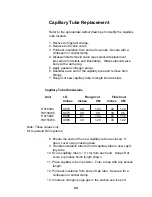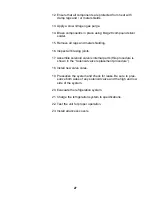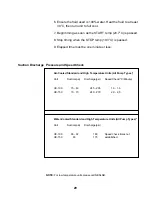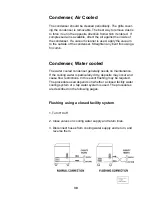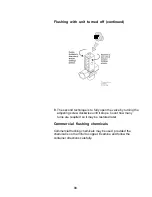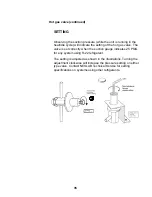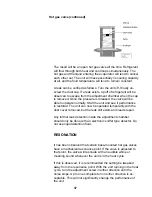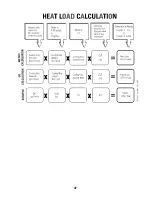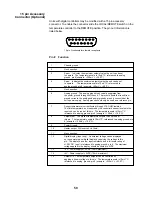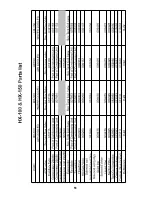
37
The result will be an open hot gas valve all the time. Refrigerant
will flow through both heat and cool loops simultaneously. The
hot gas and the liquid entering the evaporator will tend to cancel
each other out. The unit will have essentially no cooling capacity
at all, and the fluid temperature will tend to remain constant.
A leak can be verified as follows: Turn the unit off. Slowly un-
screw the dust cap. If a leak exists, a puff of refrigerant will be
observed to escape from the adjustment chamber when the cap
is removed. Once the pressure is released, the valve will be
able to operate normally. Start the unit and see if performance
is restored. The unit can now be operated temporarily with the
dust cover removed, but the leak still exists and needs repair.
Any further leak detection inside the adjustment chamber
should only be done with an electronic sniffer type detector. Do
not use liquid detection fluid.
RESONATION
It has been observed that certain base-mounted hot gas valves
have a mechanical resonance point. If the valve is adjusted to
that point, the valve will resonate with an audible whine or
moaning sound whenever the unit is in the heat cycle.
If this is observed, it is recommended the setting be tweaked
away from the resonance point. With the unit running in the heat
cycle, turn the adjustment screw in either direction until the
noise stops. Up to one complete turn in either direction is ac-
ceptable. This will not significantly change the performance of
the unit.
Hot gas valve (continued)
Summary of Contents for NESLAB HX 150
Page 9: ...9 Troubleshooting Chart Weak cooling ...
Page 10: ...10 Troubleshooting Chart Weak cooling continued ...
Page 11: ...11 Troubleshooting Chart Refrigeration pressures ...
Page 42: ...42 ...
Page 47: ...47 ...
Page 51: ...51 ...


